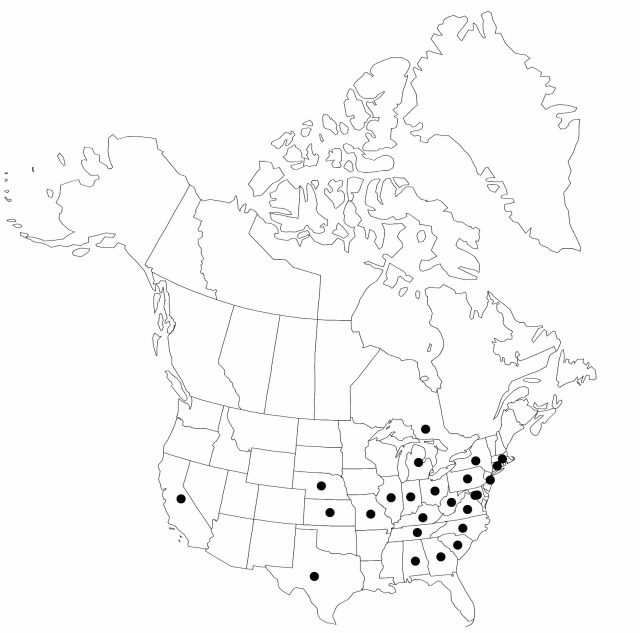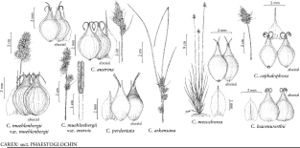Carex mesochorea
Bull. Torrey Bot. Club 37: 246. 1910.
Plants without conspicuous rhizomes. Culms 15–100 cm, 1.5–3 mm wide basally, 0.9–1.1 mm wide distally. Leaves: sheaths tight, green, fronts hyaline, yellowbrown and thickened at mouth; ligules to 3 mm, wider than long; blades 2.5–4 mm at widest. Inflorescences forming dense heads, with 4–8 spikes, 1–1.5 times as long as wide, 1–2 cm × 9–14 mm; proximal bracts not more than 2 cm; spikes with 8–20 ascending to spreading perigynia. Pistillate scales brownish to green-hyaline with green, 3-veined center, ovate, 2.3–3.1 × 1.2–2 mm, narrower than and as long as perigynia, apex cuspidate to short-awned. Anthers 1.1–1.7 mm. Perigynia pale green to pale-brown, weakly veined or veinless abaxially, 3–4.1 × (1.7–) 2–2.6 mm, margins serrulate distally; beak 0.8–1 mm, apical teeth 0.2–0.3 mm. Achenes suborbiculate, 1.5–1.7 × 1.3–1.5 mm.
Phenology: Fruiting late spring–early summer.
Habitat: Dry grasslands, roadsides, railroads
Elevation: 100–300 m
Distribution

Ont., Ala., Calif., Conn., D.C., Ga., Ill., Ind., Kans., Ky., Md., Mass., Mich., Mo., Nebr., N.J., N.Y., N.C., Ohio, Pa., S.C., Tenn., Tex., Va., W.Va.
Discussion
Carex mesochorea is naturalized in California and is probably not native at the northern and eastern limits of its range.
Selected References
None.
Lower Taxa
"shortened" is not a number.No values specified.
